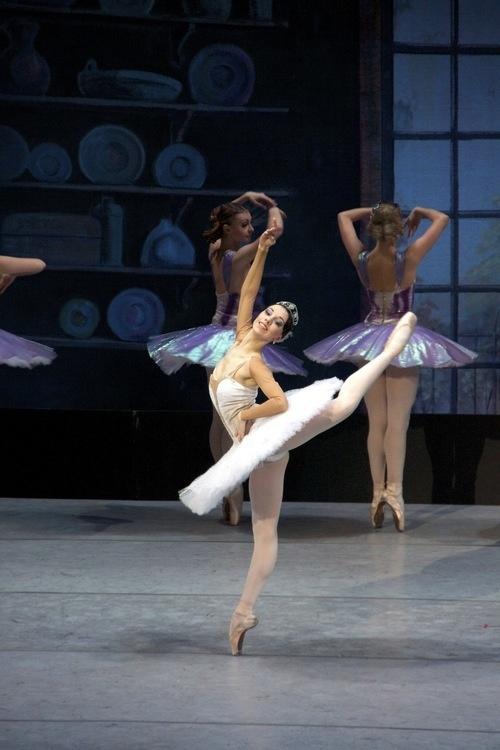
When I stepped into Jesse Auditorium to see the Moscow Festival Ballet perform “Cinderella” on April 24, I wasn’t sure what to expect since I haven’t watched a Disney princess movie since Emma Watson played Belle in the fairly recent Beauty and the Beast live-action rendition.
Even in the back rows, the audience could see the emotion that the ballerinas used to set the first act in motion. Cinderella constantly feuded with her two stepsisters and stepmother, adorned in comical outfits and using dramatic movements to convey awkward and clumsy characters.
After finishing the choreography focused on how Cinderella became her stepmother’s maid, I noticed that things seemed rushed; Cinderella met her fairy godmother shortly after her stepmother told her that she couldn’t go to the ball. It was effective, but they could have used more choreography to provide more emotion between the relationship of Cinderella and her stepmother.
The fairy godmother had a very impressive performance as she brought in four dancers that took turns dancing while Cinderella changed into her gown for the ball. The program noted that these dancers were supposed to function as the four seasons, but it wasn’t very obvious. The dancers, wearing yellow, green, red and blue, had their own characteristic performances that appeared to match their color; the ballerina dressed in red performed to a sharp piece with fast, allegro movements and the blue ballerina used adagio movements to dance a slower, more graceful piece.
Before Cinderella and Prince Charming danced alone at the ball, the company gathered to watch four performances by ballerinas dressed in clothing from different cultures, including traditional Chinese and Egyptian costumes. This was to function as the entertainment for the ball. This came across as cultural appropriation considering that the ballerinas wearing the costumes were not Chinese.
Cinderella and Prince Charming found each other after the performances and began to dance. Their choreography mainly consisted of pirouettes to highlight how the couple was meeting and falling in love for the first time. The scene quickly changed as the music began to quicken and ticking noises overpowered the music. Then, a man dressed as Father Time appeared and reminded Cinderella of her midnight deadline. It was a little bit strange that they used a ballerina as a clock, but it worked considering they weren’t using many props throughout the show.
The transition to the second act was fast because the prince immediately wanted to find Cinderella, which seemed a little desperate. The prince found her house and the stepmother and stepsisters took their turns trying on the shoe and inevitably failed. After Cinderella tried on her shoe and surprised the prince, they performed their previous dance once again to tie the end together.
The ballet was incredible in terms of costume and choreography, but some of the concepts were muddled in their efforts to keep it traditional.
_Edited by Alexandra Sharp | [email protected]_